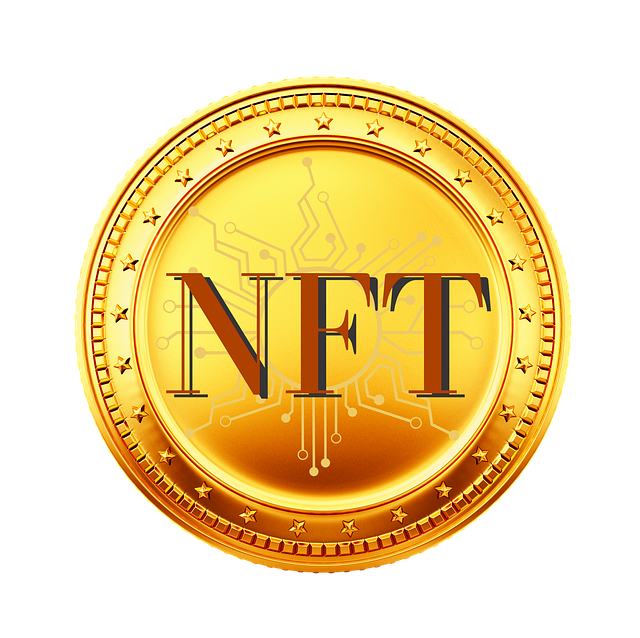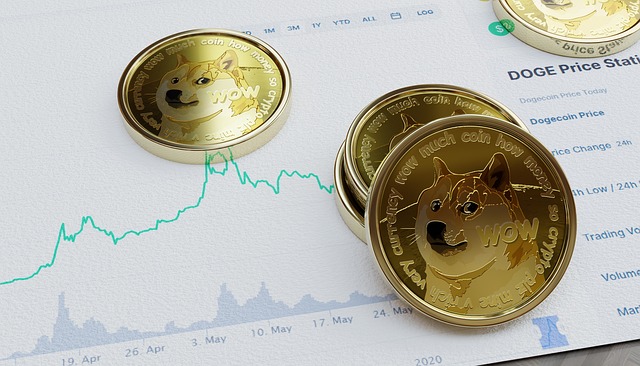What is an Automated Market Maker Crypto?
Author: Jameson Richman Expert
Published On: 2025-08-17
Prepared by Jameson Richman and our team of experts with over a decade of experience in cryptocurrency and digital asset analysis. Learn more about us.
An automated market maker (AMM) crypto represents a groundbreaking innovation within the decentralized finance (DeFi) ecosystem that fundamentally alters the way digital assets are traded and liquidity is managed. Unlike traditional centralized exchanges (CEXs), which rely on order books, market makers, and centralized order matching engines, AMMs utilize decentralized smart contracts that run autonomously on blockchain networks. This transition from order book-based trading to algorithmic liquidity pools enables peer-to-peer transactions without intermediaries, fostering a trustless, censorship-resistant environment accessible to anyone with an internet connection. By removing reliance on centralized entities, AMMs democratize access to liquidity, reduce entry barriers, and promote global financial inclusion through permissionless participation.
AMMs have catalyzed a paradigm shift in crypto trading, underpinning many decentralized exchanges (DEXs) such as Uniswap, SushiSwap, and Curve. These platforms leverage innovative algorithms and incentive mechanisms like yield farming, liquidity mining, and governance tokens to attract participants. The transparency, composability, and low barriers to entry inherent in AMMs have led to rapid growth, enabling complex financial operations—such as synthetic assets, lending protocols, and derivatives—to be built atop their infrastructure. As a result, AMMs are not just replacing traditional exchanges—they are laying the foundation for a resilient, composable, and permissionless financial ecosystem that transcends borders and traditional regulatory constraints.

Understanding How Automated Market Makers Work
At the core of AMMs are liquidity pools—smart contracts that hold reserves of two or more tokens. These pools are funded by liquidity providers (LPs), who deposit assets into pools in return for a proportional share of the trading fees generated by swaps. Unlike traditional order book exchanges, where buy and sell orders are matched based on price and quantity, AMMs deploy mathematical formulas to determine the price of tokens dynamically based on the current reserves within each pool. This mechanism ensures continuous, automated price discovery and liquidity provisioning, eliminating the need for centralized order matching and enabling instant trade execution.
The most common formula employed by AMMs is the *constant product formula*, expressed as x * y = k, where x and y represent the reserves of two tokens in a pool, and k is a constant that remains unchanged during trades. When a user executes a swap—say, trading Token A for Token B—the reserves adjust following the formula, which automatically recalculates prices based on supply and demand. This process facilitates low-slippage trading for small to medium transactions, maintains liquidity even during high volatility, and creates a seamless market experience. The efficiency of this model is further enhanced through incentives like liquidity mining, which encourage LPs to deposit assets and provide the necessary liquidity for vibrant trading activity.
Beyond the basic constant product model, advanced algorithms have been developed to address specific use cases. The *constant sum* formula, for instance, is optimized for stablecoin pools, enabling near-zero slippage swaps between assets pegged to similar values. *Balancer*, a prominent AMM platform, introduces flexible multi-token pools with adjustable weights, supporting diversified portfolios and complex strategies such as dynamic rebalancing and liquidity bootstrapping. These innovations enable sophisticated liquidity provisioning, portfolio management, and risk mitigation strategies, making DeFi more versatile and accessible to a broad spectrum of users and developers.
The automation and transparency inherent in AMMs foster trustless transactions, reducing counterparty risk, manipulation, and censorship. Smart contracts can also support programmable incentives—like liquidity mining rewards and governance tokens—that further incentivize participation and align stakeholder interests. The composability of AMMs allows them to serve as building blocks for layered financial applications such as decentralized derivatives, NFT liquidity pools, flash loans, and synthetic assets. This interconnectedness fuels continuous innovation within DeFi, leading to a vibrant ecosystem of interoperable protocols and financial instruments.
Benefits of Automated Market Maker Crypto
AMMs bring numerous advantages that are reshaping crypto trading and democratizing access to financial services. Foremost is their ability to operate 24/7—liquidity is available around the clock, unlike traditional markets that have limited trading hours. This continuous operation allows traders to react promptly to global market shifts, arbitrage opportunities, and emerging trends, potentially enhancing profitability and market efficiency. The instant liquidity provision also reduces the risk of order slippage and enables more accurate price discovery in real-time.
A core benefit of AMMs is their democratization of liquidity provision. Anyone with internet access can become a liquidity provider by depositing tokens into pools, earning a share of trading fees proportionate to their contribution. This model incentivizes broad participation, resulting in deeper liquidity, lower spreads, and reduced slippage for traders. Additionally, LPs can earn extra rewards through yield farming and governance tokens, creating an ecosystem where value accrues to active participants and fostering a decentralized, community-driven financial infrastructure.
Decentralization is fundamental to the ethos of AMMs. By dispersing liquidity across numerous pools managed via smart contracts, they mitigate risks associated with centralized control—single points of failure, censorship, or shutdowns. This decentralization aligns with blockchain principles, enhancing resilience and security. Furthermore, AMMs' interoperability and composability facilitate integration with other DeFi protocols, enabling functionalities like decentralized lending, derivatives, and synthetic assets, thus supporting a layered and innovative financial environment.
Another significant advantage involves the potential for cross-chain interoperability through protocols like Wormhole, Cosmos, or Polkadot. These enable liquidity transfer and data sharing across multiple blockchains, expanding the reach of AMMs beyond Ethereum and fostering a multi-chain ecosystem. As a result, users gain access to a broader array of assets, lower transaction costs, and increased liquidity depth—further democratizing DeFi participation.
Challenges and Risks in Automated Market Maker Systems
Despite their transformative impact, AMMs face several inherent challenges and risks that need careful management. One prominent issue is *impermanent loss*, which occurs when the value of assets deposited by LPs diverges due to price fluctuations. If the relative prices of tokens in a pool change significantly, LPs may see a reduction in their overall holdings compared to simply holding the assets outside the pool, especially if trading activity does not generate adequate fees to offset this loss. While impermanent loss can be mitigated through high trading volume, incentivization, or choosing pools with less volatile assets, it remains a key consideration for LPs contemplating participation.
*Slippage*—the difference between expected and actual trade execution price—is another challenge, especially for large trades relative to pool size. High slippage results in increased costs, making such trades less attractive and potentially discouraging arbitrage and large-volume traders. During periods of low liquidity or high volatility, slippage can become severe, impairing overall market efficiency and user experience.
Smart contract security is critical. Since AMMs operate via code, vulnerabilities—such as bugs, exploits, or reentrancy attacks—pose significant risks. Past incidents, including high-profile exploits like the $600 million hack of the Poly Network or vulnerabilities in earlier DeFi protocols, highlight the importance of comprehensive audits, formal verification, and community oversight. Continuous updates, bug bounty programs, and transparent governance are essential to maintaining trust and safeguarding user assets.
Regulatory uncertainty also poses a significant challenge. Different jurisdictions are developing frameworks around DeFi, with some proposing KYC/AML compliance, licensing, or restrictions on certain activities. The evolving legal landscape could impact platform operations, user participation, and cross-border liquidity flows. Developers and protocols must proactively engage with regulators, implement compliant features, and build adaptable governance models to navigate this environment effectively.

Popular Automated Market Maker Protocols and Platforms
Uniswap, launched in 2018 on Ethereum, is widely regarded as the pioneer of AMM platforms. Its permissionless, open-source design based on the constant product formula revolutionized decentralized trading and set the standard for subsequent protocols. Its user-friendly interface, low fees, and innovative liquidity incentives attracted millions of users, catalyzing the explosive growth of DeFi.
SushiSwap emerged as a community-led fork of Uniswap, adding features such as staking pools, token governance (SUSHI), and yield farming incentives. Its emphasis on decentralization, community governance, and feature expansion exemplifies the rapid innovation and competitive spirit within the AMM ecosystem.
Curve Finance specializes in stablecoin and pegged-asset swaps, offering ultra-low slippage and efficient trading between assets like USDC, USDT, and DAI. Its optimized bonding curve and fee structure make it highly attractive for liquidity providers seeking stable, low-cost trading environments.
Balancer introduces multi-token pools with customizable weights, supporting diversified portfolios and complex strategies like liquidity bootstrapping and risk management. Its flexibility appeals to sophisticated users seeking tailored exposure and advanced portfolio rebalancing.
Cross-chain AMMs such as PancakeSwap (Binance Smart Chain), QuickSwap (Polygon), and SpiritSwap (Fantom) extend the core functionalities across multiple blockchains. These platforms address scalability issues, reduce transaction costs, and facilitate cross-chain liquidity, thereby expanding the reach and usability of AMMs beyond Ethereum.
When selecting an AMM platform, consider factors such as security audit history, fee structures, governance mechanisms, community support, and integration capabilities with other DeFi services. Many centralized exchanges are also integrating AMM features or offering DeFi gateways, providing users with hybrid trading experiences that combine the best of centralized and decentralized finance.
Future Outlook and Trends in Automated Market Makers
The future of AMMs is poised for continued innovation driven by scalability, interoperability, and user experience improvements. Layer 2 solutions like Optimism, Arbitrum, and zk-Rollups are significantly reducing transaction fees and increasing throughput, making AMMs more accessible to retail users and high-frequency traders.
Inter-chain communication protocols such as Wormhole, Cosmos, and Polkadot are enabling seamless cross-chain liquidity transfer and data sharing, fostering a truly interconnected DeFi ecosystem. This multi-chain approach allows users to access assets and liquidity pools across different blockchains, enhancing resilience and user choice.
Innovations like *concentrated liquidity*, introduced by Uniswap v3, enable LPs to specify price ranges for their liquidity, greatly increasing capital efficiency and reducing impermanent loss. Adaptive fee structures that dynamically respond to market volatility are also being adopted to better protect LPs and optimize returns during turbulent periods.
Further advancements may include AI-driven liquidity management, automated risk mitigation tools, and smart contract architectures that adapt to changing market conditions. These innovations aim to enhance stability, efficiency, and profitability, ensuring AMMs remain at the forefront of DeFi evolution. Exploring Ethereum’s ongoing scaling solutions, fee optimization, and cross-chain interoperability will be crucial for participants seeking to leverage emerging opportunities.
Conclusion
In essence, automated market maker crypto systems are transforming the landscape of decentralized trading, enabling continuous, permissionless, and transparent asset exchanges. Their innovative algorithms and liquidity models democratize access, challenge traditional finance paradigms, and foster a resilient, interconnected DeFi ecosystem. While challenges such as impermanent loss, security vulnerabilities, and regulatory uncertainties exist, ongoing technological advancements, community governance, and cross-chain interoperability promise a vibrant and sustainable future. For traders, developers, and investors, remaining informed about evolving best practices, security measures, and legal developments is vital to fully harness the transformative potential of AMMs within the expanding decentralized financial landscape.